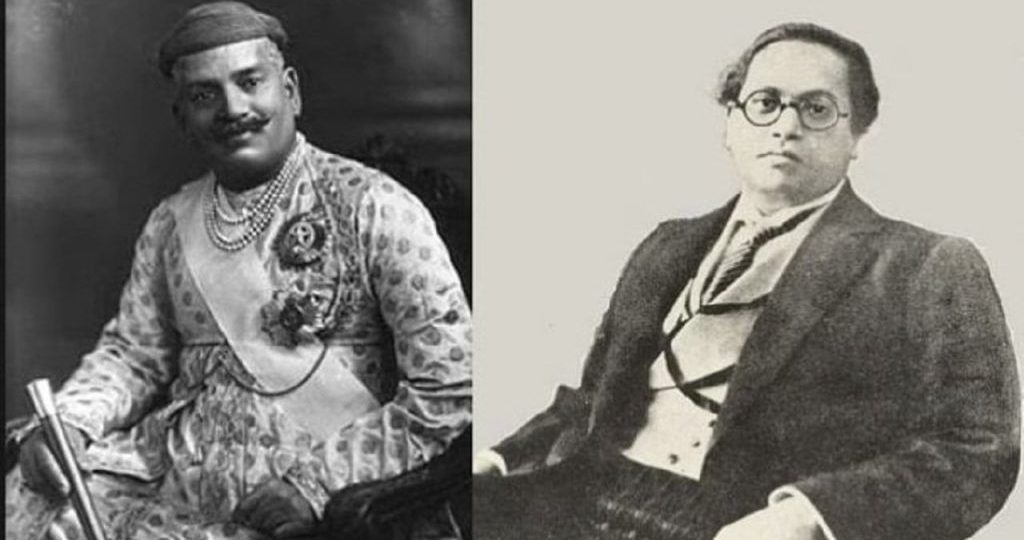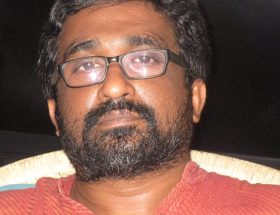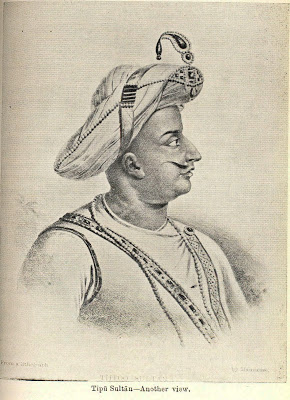The tale of two interviews
Dr. SPVA Sairam
I] The Interview of Sayajirao Gaikwad by Maharani Jamnabai
In the year 1870, Malharrao Gaikwad ascended the throne of Baroda after the death of his brother Maharaja Khanderao [1828-1870] and in a very short span, he had drawn the wrath of both the masses and the British Government due to his maladministration.
As has been observed by Stanley Rice: “By 1873 things had come to an intolerable pass. The Bombay Government had long been anxious at the turn affairs were taking in Baroda, and in March 1873 they decided to replace Colonel Barr with Colonel Phayre as Resident at the Court of Baroda.” [1]
Owing to the pressure from the Government, Malharrao tried to reform the state by bringing in Dadabhai Naoroji, but nothing substantial happened. To use the words of Colonel Phayre: “Mr. Dadabhai had not the capacity or the experience necessary to undertake the herculean task of reforming Baroda.”
The standard of administration kept on deteriorating so much so that Lewis Pelly, who was appointed to succeed Colonel Phayre, was shocked to note that:
“While the revenue was 94 lakhs, the expenditure in the past year had been no less than 171 lakhs, of which 70 went to the gratification of favorites and courtesans and to the repairing of palaces and other personal extravagances of the Maharaja… My own observation here has assured me that the cultivating classes are discontented to an unusual degree… The general voice of the community was loud in condemnation of His Highness’ extravagant expenditure on himself, his favorites, and his palaces.”[2]
On 19th April 1875, the Government issued a fateful proclamation to depose Malharrao from the Sovereignty of Baroda State. As Jamnabai and Maharaja Khanderao did not have any sons [the couple had a daughter called Tarabai], the former began searching for a male successor among the heads of the extended branches of the dynasty.
Upon inquiry, she found that Damaji [the founder of the Gaikwad dynasty] had two grandsons. All the rulers of Baroda were descended from the elder grandson, while the descendants of his second grandson Prataprao formed the remote lines of the Gaikwad family. For reasons unknown, Maharani gave her preference for adopting one of the boys of the Prataprao family. [3]
Then one day, a band of police appeared in the village of Kavlana [nearly 300 km from Bombay] to find Kashiram. He was one of the descendants of Prataprao and had three sons named Gopalrao, Sampatrao, and Anandrao. When the police met Kashiram’s family, they were living in a state of obscurity [some say they were beggars]. After a brief conversation, they were picked up and escorted to Baroda where they would be presented before the Maharani for the interview.
In the course of the interview, when Maharani asked why he had come, the twelve-year-old Gopalrao answered:
“I have come to be Maharaja”
She must have been impressed at the level of confidence displayed by this young boy and on the 27th of May 1875, Gopalrao was adopted by Maharani Jamnabai who bestowed him with the title Sayajirao III. Perhaps, the happiest of all must be the young Tarabai who has now found a brother [if the rules did not care about the sex of the successor, Tarabai would have been the Queen, and Maharani Jamnabai would have saved all the troubles of finding an able successor!]
After the coronation, the young Sayajirao underwent intense training under men like F.A.H. Elliot and Sir T. Madhava Rao – whom Babasaheb called the premier Indian statesman. [4]
II] Interview of Dr. Ambedkar by Maharaja Sayajirao Gaikwad
After ascending the throne, Maharaja Sayajirao initiated numerous social and economic reforms to transform the state of Baroda, so much so that he came to be hailed as the architect of a new order in Baroda.
Nearly 38 years after his coronation, he was set to meet a 22-year-old young boy whose short stay at Baroda had proved to be painful owing to caste prejudices. [5]
Young Bhim met Maharaja at the Malabar Hill Palace [Bombay] in order to share the inconvenience faced by him in service and residential facilities while at Baroda. Maharaja already knew almost everything about young Bhim. Without mentioning a single word about the inconvenience faced by him, Maharaja went on to discuss various subjects with young Bhim. After about half an hour of discussion, the Maharaja asked him to come at the same time the next day. Since the Maharaja did not speak anything about the complaints, young Bhim felt unhappy but he did not know that the Maharaja had bigger plans for him.
The next day, the Maharaja asked which subject would he like to study. Young Bhim replied Sociology, Economics, and especially Public Finance.
Maharaja: What will you do by studying these subjects?
Young Bhim: The study of these subjects would give me clues for improving the depressed condition of my society and I shall undertake the work of social reforms on those lines.
Maharaja: (Laughingly) But you are going to serve us, isn’t it? Then how are you going to study, serve, and do social service?
Young Bhim: If Maharaja gives me the due opportunity, I shall manage to do all the things.
H. H. Maharaja: I have been thinking along the same lines. I am thinking of sending you to America, will you go?
Young Bhim: Yes sir.
H. H. Maharaja: Now you can go. Send an application of foreign proposed study to our Academic Officer asking for a scholarship and inform me accordingly.
This interview with young Bhim must have reminded Maharaja of his own encounter with Maharani Jamnabai in 1875!
On June 4 1913, young Bhim signed an agreement with the Baroda State, agreeing to devote his time to studying the prescribed subjects and to serve for ten years the Baroda State after completion of his studies. He was awarded an amount of Rs. 20,434 as a scholarship.
At Columbia University, young Bhim excelled at every subject he touched. He went on to develop cordial relationships with legends of his era like John Dewey [Philosopher], James Shotwell and J.H. Robinson [Historians], Thorndike [Psychologist], Alexander Goldenweiser [Anthropologist], Giddings [Sociologist], and others.
Babasaheb finished his Ph.D. thesis on Economics titled “The Evolution of Provincial Finance in British India: A Study in the Provincial Decentralization of Imperial Finance.” The dedication part of it reads [6]:
Dedicated to HIS HIGHNESS SHRI SAYAJIRAO GAIKAWAD MAHARAJA OF BARODA
AS A TOKEN OF MY GRATITUDE FOR HIS HELP IN THE MATTER OF MY EDUCATION
Speaking about the significance of this book, Professor Edwin Seligman, who was Babasaheb’s teacher at Columbia University, observed:
“The value of Mr. Ambedkar’s contribution to this discussion lies in the objective recitation of the facts and the impartial analysis of the interesting development that has taken place in his native country. The lessons are applicable to other countries as well; nowhere, to my knowledge, has such a detailed study of the underlying principles been made.” [7]
In 1917, after returning to India, Babasaheb went to Baroda to serve the state for 10 years as per the agreement.
Initially, Maharaja appointed Dr. Ambedkar as his Military Secretary [he planned to promote him to his finance minister soon]. But, Babasaheb was once again subjected to caste discrimination despite conquering all the degrees in the world. Deeply disappointed by the treatment meted out to him, he returned to Bombay in the August of 1917.
In 1930, the stage was set once again for the interaction between these two iconic figures. This time the location was London and the occasion was the first Round Table Conference. Maharaja was one of the invitees to the conference. He witnessed with pride the way in which Dr. Ambedkar argued the case for the political emancipation of the millions of depressed classes.
As noted by Narendra Jadhav, “Coincidentally, Maharaja of Baroda His Highness Sayajirao Gaikwad who was also participating in the conference, was so moved by the speech of Dr. Ambedkar that he later arranged a special dinner for him.” [8] After returning to his residence in London, Maharaja –with joyful tears in his eyes–told his wife Maharani Chimnabai about the glorious speech given by Dr. Ambedkar.
In the later stages of his life, Babasaheb penned an emotional letter in 1950 to Maharaja’s grandson expressing his desire to write a biography on Maharaja Sayajirao Gaikwad. He wrote:
“He was my patron and architect of my fortune… I owe a deep debt of gratitude. I wish I could adequately repay. The only way I could do is to write his life.” [9]
Unfortunately, Babasaheb could not complete the task and the thinking world missed the opportunity to read the life and times of Maharaja through the lens of Dr. Ambedkar.
III] Buddha, Jotiba and Maharaja Sayajirao
Interestingly, the influence of Maharaja’s work on Babasaheb can be traced to the school days of the latter because the biography of Buddha which Dada Keluskar gifted to young Bhim was published by Maharaja’s Baroda Oriental Series. As rightly observed by Vasant Moon [10]:
“Very few people might be aware that Dr. Ambedkar used some non-canonical literature also to substantiate his theory… let me mention the name of Krishnaji Arjun Keluskar, former Principal of Wilson High School, Bombay who had published a biography of Bhagwan Gautam Buddha, in Marathi, in 1898, a copy of which he personally presented to young Bhimrao Ramji Ambedkar on his success in the Matriculation examination of the University of Bombay, in 1907. In Keluskar’s book, we find references to disputes on the waters of the Rohini river and Siddharth Gautam’s intervention to avert the outbreak of hostilities between the Sakyas and the Koliyas.”
In other words, nearly 46 years after receiving the book, Babasaheb was still using it as one of the sources in his magnum opus “The Buddha and his Dhamma”. This shows the enormous degree of impact this book had on the mind of Dr.Ambedkar!
Another common link between Maharaja and Babasaheb is Mahatma Jotiba Phule. As is known, Maharaja was profoundly influenced by the revolution initiated by Jotiba-Savitrimai and met them personally on a few occasions.
Jotiba had narrated his path-breaking work titled Cultivator’s Whipcord (Shetkaryacha Asud) to Maharaja. Noting the same, Jotiba wrote:
“I am extremely indebted to Shri Sarkar Gaikwad Senakhaskhel Samsher Bahadur Sayajirao Maharaj for taking time from all of his valuable political administrative work to hear the reading of this book [Cultivator’s Whipcord] with great pleasure and loving emotions; and for giving me the benefit of his munificence and a show of honour.”[11]
[Maharaja is probably one of those rare and lucky individuals who witnessed the speeches of both Jotiba and Babasaheb.]
Jotiba had also written a series of letters from time to time requesting Maharaja to emancipate his Shudra-Atishudra brethren. [12] Babasaheb was aware of all these things, which is why he called Jotiba his guru because it was Jotiba who had made tireless and pioneering efforts to dismantle the slavery of the countless Shudra-Atishudras.
If we probe deep enough, we would find many more interesting connections among our emancipators. Adding those events to our knowledge system helps us to understand more about our ancestors, their character, and the strength of the human spirit with which they overcame the obstacles, to alter the course of our destiny and history. Thus, analyzing history assumes supreme significance, and as Babasaheb reminded us, “Those who do not know history cannot make history.”
~
References
1] Chapter 1, Volume 1 of Life of Sayajirao III: Maharaja of Baroda by Stanley Rice
2] Sir L Pelly, East India Papers [Baroda], vi, page 150
3] From page 30, Volume 1 of Life of Sayajirao III: Maharaja of Baroda by Stanley Rice
4] Page 40, Volume 9 of BAWS
5] Young Bhim joined Elphinstone college on a scholarship of Rs 25 per month from Baroda, after graduating he took up a job as a Probationer in the Accountant General Office of Baroda with a monthly salary of Rs 75. Despite facing caste discrimination, he tried to best to work at Baroda, but on hearing news of his father’s illness, he returned to Bombay to see his ailing father [ See from page 211, Volume 17[1] of BAWS]
6] Page 62, Volume 6 of BAWS
7] ibid, page 56
8] Page 113, Ambedkar: Awakening India’s Social Conscience by Narendra Jadhav
10] From page ix, Preface to Volume 11 of BAWS
11] Page 3, Introduction to Cultivator’s Whipcord by Mahatma Phule [Translated by Gail Omvedt and Bharat Patankar]
12] See Volume 2 of Selected Writings of Mahatma Phule
~~~~
Dr. Spva Sairam is a Dentist by profession.










